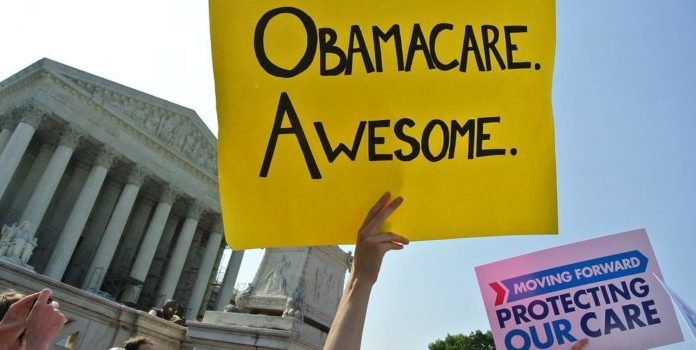(Ezekiel Loseke, Headline USA) Despite President Joe Biden’s campaign-trail options to bring more afforable health care to the masses, premiums are set to rise astronomically again in 2023, making it less accessible than ever.
While the system’s current pricing problems stem largely from the Obama-era passage of the Affordable Care Act, which forced middle-class insurees to subsidize the cost of uninsured individuals (many of them illegal immigrants), the controversial law’s plan to disrupt industry price-gouging by introducing a public option has proven to be an abject failure.
Washington state, Nevada and Colorado all passed laws enabling Obamacare’s “public option,” but all three have failed to produce the promised lowered prices, according to Politico.
In Colorado, for example, only one insurance company (out of eight), met the cost-cutting measures set by the politicians who created the program.
The Colorado law required all insurance companies who offer individual and small group plans to produce at least one ‘public option’ plan. This plan must cut premium costs by 5% every year for three years, while increasing benefits, including reducing out-of-pocket costs and increasing “cultural responsiveness.”
The failure of all but one plan to meet this standard was “a shot across the bow” according to Sabrina Corlette, a research professor and founding co-director of the Center on Health Insurance Reforms at Georgetown University’s McCourt School of Public Policy.
However, it may not be the fault of the insurance companies themselves as much as the lofty demands of government regulators who have set them up for failure.
Amanda Massey, executive director of the Colorado Association of Health Plans, said the goals are untenable.
“Certainly, [insurers are] trying to do everything they can to reduce the costs, but I think we have to be very thoughtful about ensuring that carriers can still be solvent and cover the costs of their claims,” Massey said.
In Nevada, the state has already had to implement easier targets for the industry to aspire to.
Previously, the goal had been to reduce premiums by 20%, but policy makers are meeting to consider reducing the goal to 16%.
State Sen. Nicole Canizzaro, D-Nevada, who introduced the bill, expressed some optimism.
“Obviously we’ve got a long way to go, but I think that’s a great step in the right direction and a great first step,” she said. “Even [16%] is something I’m proud of and I think will make a difference.”
In Washington state, the first state to try the policy, enrollment remains very low and prices are still far higher than what was promised by lawmakers.
State Rep. Eileen Cody, D-Wash., who sponsored and introduced the public-option bill, expressed dissatisfaction with its function.
“It’s still got a ways to go,” she said. “It’s not exactly what I had envisioned—I’ll put it that way.”
Robert Moffit, a senior research fellow in the Center for Health and Welfare Policy at the Heritage Foundation, explained that the failure of these policies was perfectly predictable.
“They’re price controls. That’s what they are,” he said.
“And they’ll have the same effect that we’ve had in price controls for centuries, which is a reduced availability of the controlled commodities, whether they’re medical services or wheat or anything else,” he continued. “I think the likelihood of them being successful, making a price control system work, is nil.”

